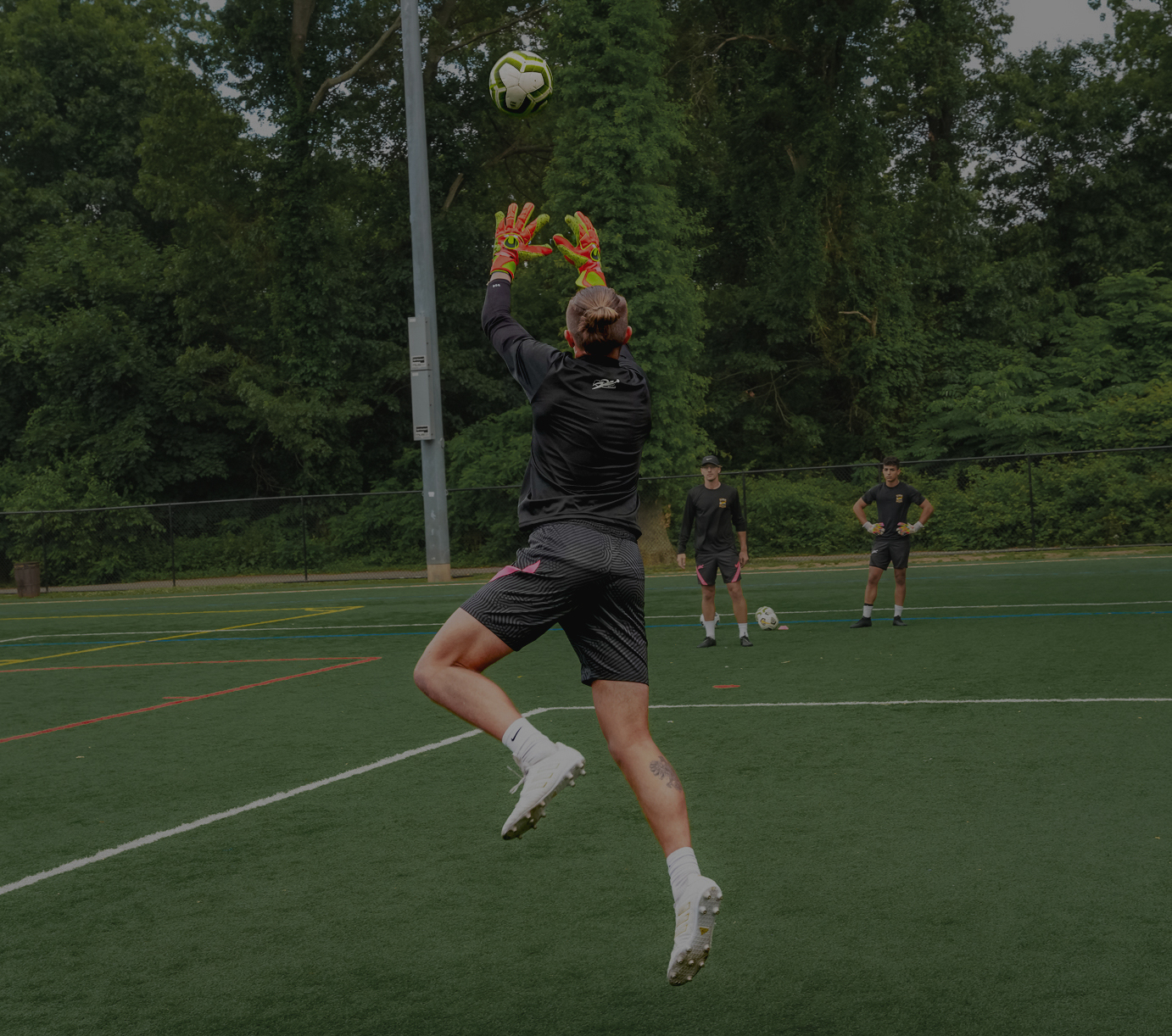High balls and crosses
The Goalkeeper has to dominate the penalty box. This means collecting through balls, coming out on crosses and set pieces with confidence to let the opponent know this might not be their best strategy. A good goalkeeper can control his 6 yard box, a great goalkeeper can dominate the 12 yard zone.
Why is it important?
The Goalkeeper is the only player on the field who can use the hands. It is an advantage that has to be utilized especially when there is an aerial ball in a threatening position to the goal. The Goalkeeper can give great relief to the team by collecting crosses and high balls and can drain the opponents confidence in playing crossed balls or can force the opponent to try a different attacking strategy.
Starting Position on a Corner?
You need to give yourself a chance with clever positioning. It is recommended to try and stay higher, this will give you an advantage to get to the ball in most cases. Of course the goalkeeper is always mindful of not being exposed to chipping or being beat at the near post.
Starting position on a corner kick is 45 degrees to the ball. On a corner kick the goalkeeper will position himself/herself on the middle/back portion of the goal. Also, understand if the cross is swinging in or swinging away, this forces an adjustment to the starting depth of the GK.
Starting positions for crosses in action have countless factors to consider and should be evaluated on a case by case basis.
Technical key points
- The Goalkeeper reads the trajectory of the ball and finds the correct timing
- The Goalkeeper in most cases jumps off one foot and brings the other knee to the chest for a higher jump and for protection from attackers.
- The Goalkeeper aims to catch the ball at the highest point possible with arms extended to the ball;
- The Goalkeeper brings the ball to the chest after catching it to avoid losing it on the way down in the crowd.
Why does The Goalkeeper jump off one foot and drive the opposite knee upwards?
Because jumping off one foot allows for a higher jump and easier coordination. The other leg is used for protection from other players and adds upward momentum to the jump.
Why does the Goalkeeper bring the ball to the chest after catching it?
The goalkeeper brings the ball to the chest to secure it. Collision or contact with other players could knock the ball out of the goalkeeper’s hands. It’s much less probable when held with a “basket’’ catch, avoiding ball exposure to the crowd even when in the goalkeeper’s hands.
Punching the ball away : The goalkeeper will not always be able to catch the ball when claiming a cross. Often he/she will deflect the ball by punching it. Please see our article on ‘’How to punch the ball – Goalkeeper’’. (LINK)
Crosses to the far post : When the ball is going over the head of the goalkeeper, the goalkeeper doesn’t backpedal to the ball, instead he/she forward crosses the feet which allows for quicker movement and better jumping coordination.
Coaching points
Timing, coordination, and footwork are all very important. First the goalkeeper has to learn the technique of jumping off one foot, bringing the knee to the chest, and catching the ball at its highest point. Only after the goalkeeper is able to execute this then we build on managing crosses with physical pressure and contact.
Important tip: During the learning process, young goalkeeper will be tempted to make a forward movement towards the server too early, without knowing the power and distance of the cross. The goalkeeper only starts the movement towards the ball after he/she has evaluated the trajectory of the ball. We have a split second to read the ball, then a fraction of a second to react and make the appropriate move to go or to stay (Keeper vs Away).
Drill example #1: Goalkeeper positioned in the middle of the goal, coach positioned between 6yrd and penalty spot. Serve high ball to either side (alternate). Repeat until the Goalkeeper is able to perform movement correctly driving right knee and left knee up to catch the ball at its highest point.
Dril Example #2: The coach will now move to the side. Ball will be served from the side of the goal. Start with serving the ball with your hands (easier for the goalkeeper). Enforce correct technique.
Drill Example #3: Now the coach can serve the ball from a further distance and by using his feet off the ground or a volley into the 6 yard box. Use dummies or other GKs and place them inside the box to simulate a game situation where the penalty box is crowded.
How to Learn?
Timing and Footwork are the most important qualities for coming out for crosses and collecting high balls. Once you evaluate the trajectory of the ball, quick feet and precise footwork will make it possible for you to get there with the right momentum.
It is crucial to train high balls from various distances and depths often in order to develop an eye for the ball and good timing. For the younger ones, it is recommended to start with simple drills that focus on:
- Teaching them how to jump off one foot while bringing the other leg up for protection
- Developing the ability to jump off the correct leg.
- Securing the ball at its highest point and above their head, as well as in front of their body and not behind.
Once the goalkeeper understands this and can physically perform the correct movements, then you can introduce more elaborate situations.


